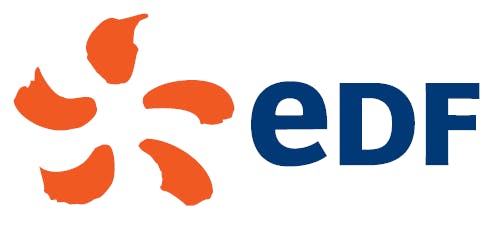Key performance indicator
The Group’s annual target for conventional waste recovery is at least 90%. The methodology associated with this indicator is described in section 3.6 “Methodology”.
The 2021 result for recovery of conventional waste sent to recovery centres is above the annual target.
Regarding waste volumes, year-to-year changes in tonnage are strongly influenced by investments and decommissioning programmes as well as, regarding the hydropower sector, the cleaning work for dams. Accordingly in 2021, a number of draining and cleaning sites caused a significant increase in the production of sediment and gravel from dams in France, totalling 710,000 tonnes, compared to a total volume of conventional waste produced by the EDF group of 1.07 million tonnes.
In 2021, hazardous waste production totals 73,000 tonnes Group-wide. This mainly consists of mixtures of water and hydrocarbons, sludge from flue gas treatment from the operation of facilities, and one-off production of waste hydrocarbons in the United Kingdom. In France, with the optimisation of the operating process, hazardous waste production has fallen by 35% in five years. New tools have recently been put in place to further optimise the management of production of hazardous waste from industrial sector operations (including a dedicated quarterly indicator).
Annual rate of conventional waste directed towards a waste recovery industry (%)

This graph shows us the annual rate of conventional waste sent to recovery channels (in %)
2019 : 92.4
2020 : 91.9
2021 : 92.7
Target : > 90
3.2.4.4.2 Recovery of combustion products
Use of ashes
Resulting from the combustion of coal to generate electricity, coal ashes have properties that enable them to be used in various applications (in particular cement and concrete). In 2021, EDF produced 91,188 tonnes of coal ash and used 39,342 tonnes, i.e. a use rate of 43%.
Research works
As part of its continuous improvement approach, EDF conducted research works to improve the use of ashes, sediment and sludge, particularly via works by the non-profit RECORD (1).
3.2.4.4.3 Recycling in the field of new renewable energies
Recycling of wind turbines
| 98% recyclable | Almost all the components of a wind turbine can be recycled, with the exception of the blades and permanent magnets. Composed essentially of concrete, steel/cast iron, copper and aluminium, the structure of a wind turbine is 90% recyclable. Including concrete foundations, this figure rises to 98%. |
|---|
The hard-to-recycle components are the composite material blades. They represent about 10% of the weight of a wind turbine (2% when including the foundations). The most mature treatment solution for the moment is energy recovery.
Blades
| Support for the call to ban dumping | In 2021, EDF Renewables, as a member of WindEurope, supported the Europe-wide call to ban dumping of used wind turbine blades by 2025. The European wind turbine industry is actively committed to reusing, recycling or recovering 100% of used blades. |
|---|---|
| R&D | Wind turbine blades and components that are not currently recycled are the subject of a variety of experiments and pilot projects on which EDF Renewables is working, in conjunction with EDF R&D: recovery of fibre-glass blades and transformation into granules for integration into concrete or wood aggregate; reuse for street furniture. |
| A 100%-recyclable wind turbine by 2030 | EDF Renewables is particularly working with Siemens Gamesa with the goal of deploying several sets of recyclable blades on a future offshore project. Using this technology, the materials contained in the blade can be separated at the end of its useful life, meaning it can be fully recycled. |
(1) There were many examples, including the free supply of warm water from the Gravelines power plant to the Aquanord fish farm, where by installing pipes to draw warm water from the drains, the fish farm collects 10m3 per second, without a water heating system (see the EDF “Circular economy and regions” guide).
